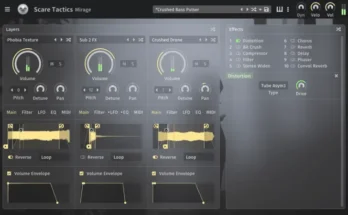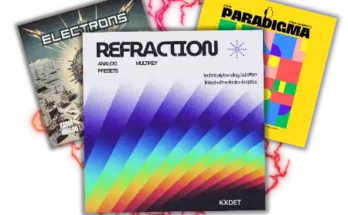WAV | 383.76 MB
Convolution reverbs have burst upon the music software scene as an easy and powerful way for musicians and sound designers to add lush and realistic emulations of real acoustic spaces to their work.
One thing that many people may not realize is that convolution is itself little more than a highly intricate filtering mechanism, not any sort of reverb-specific thing. This raises the possibility for using convolution to create new and exotic sound filters never before heard.
This is precisely what Spectral Relativity is all about. Spectral Relativity is a ground-breaking collection of impulse responses, to be used in your favorite convolution engine, designed to do very un-reverb-like things:
Place sounds three dimensionally
Color or change the spectral balance of a sound
Smear sound into lush ambient washes
Reverse or thoroughly obliterate time
Act as an otherwordly effects pedal
Distort and mangle sound creatively
Animate simple sounds into wild sonic textures
Pitch-shift and pitch-bend sounds in an extraordinary fashion
Targeted primarily at electronic, ambient, and abstract musicians, Spectral Relativity transforms your favorite convolution engine into a general-purpose DSP processor. But musicians and sound designers from all walks of life may find use for Spectral Relativity’s powerful capabilities:
Space music artists can use Spectral Relativity to create huge sonic effects
Film musicians can use Spectral Relativity to create abstract scene soundbeds
Electronica artists can use Spectral Relativity to add flavor to techno, club, or other styles of rhythmic electronic music
Sound designers can use Spectral Relativity to morph foley fx into unrecognizable forms
Goth or dark ambient musicians can have a field day creating dark textures
Guitarists can three-dimensionally position and spectrally balance their sounds
Hip hop artists can add wild beat-synced effects to their rhythm lines
The list goes on and on…
Also, the following demos are available which show just a tip of the Spectral Relativity iceberg. For all demos, the dry sound is played first, then with various Spectral Relativity filters applied. Only one impulse was applied to each iteration; no impulse stacking was used. ONLY Spectral Relativity was used to process the sounds, including the stereo pan.
Remember, each sound was processed only once, and using only Spectral Relativity! As one can tell, Spectral Relativity is an exciting new product for computer musicians.
Specifications:
All impulses are in pristine 16-bit 44.1KHz stereo WAV format
Over 850 individual impulses spread out over eleven categories
Over 630MB of impulse data
[toggle title=”Home page”]https://tinyurl.com/yygx84wc[/toggle]

http://alfalink.to/314211d5444927533d0f
Please REPORT in Comment Broken Links




